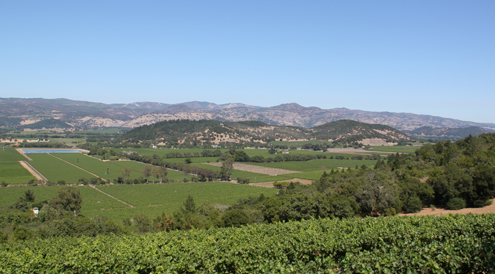
I remember in the early 1990s in Hong Kong when Mondavi was one of the strongest wine names from the New World. Mondavi Fumé Blanc was very popular, and was served at the M at the Fringe restaurant (which sadly closed) as well as many five-star hotels. Before New Zealand took the region by storm with its herbaceous, refreshing Sauvignon Blancs and vibrant Pinot Noirs, we marveled at Byron Pinot Noir from California’s Central Coast for its generosity and its ability to deliver consistently ripe strawberry flavours vintage after vintage. This was in direct contrast to Burgundy reds, which seemed mean and inconsistent by comparison.
While American wines 20 years ago seemed to have the leading edge with the largerthan- life personality of Robert Mondavi at the helm, they lost it when Australian, and soon after, New Zealand producers concentrated their marketing efforts in this part of the world. At that time American producers were writing their success story in their own local markets, giving birth to cult wines and boutique producers that had no need to look outside their own burgeoning market.
With changing economic times and the huge growth in interest in fine wines in Hong Kong, Macau and China, the Californian producers are raising their eyebrows and looking more closely at this market. I have seen Napa Valley Vintners (NVV) go from very few organized events in Asia to a full-out marketing effort over the past two years. NVV is a nonprofit trade association responsible for promoting the Napa Valley appellation and it represents more than 430 Napa producers. Events held by NVV provide a great opportunity to appreciate and taste a diverse range of wines from Napa Valley.
A recent tasting of nine NVV members : Ackerman Family Vineyards, Black Stallion Winery, Blackbird Vineyards, Cardinale, Helena View Johnston Vineyards, Pine Ridge Vineyards, Signorello Estate, Spring Mountain Vineyard and Swanson Vineyards, just to put things into perspective, Napa Valley is a small, high-quality wine region, which produces only 4 percent of the wine from California. Being small and focused on quality has helped the image of wineries from Napa. Contrast this with the larger neighboring region of Sonoma, which doesn’t enjoy the same high profile.
Although most wineries in California were born over the past 50 years, grape growing has been part of the state’s tradition for much longer – over 150 years. The first vineyards were planted in 1778 by Spanish mission fathers, and the first winery was established in the 1850s during the California Gold Rush. By the 1860s, there were 50 vintners in Napa Valley, and even 100 years ago, wines from the likes of Inglenook, Charles Krug and Beringer were gaining recognition among wine enthusiasts. It was phylloxera (a root-consuming louse) and Prohibition from 1920 to 1933 that brought the shutters down on an industry with huge potential. Ever since the repeal of Prohibition, the Californian wine industry has gone from strength to strength, with Napa Valley wineries leading the way.
Tasting the 19 wines that were presented by members of NVV, it is clear that Napa producers have one thing in mind: unrelenting quality, making the very best from a region that enjoys the highest reputation for quality in the US. From Signorello with its fullbodied, generous Chardonnay, to Pine Ridge with its classic, easyto- love Cabernet Sauvignon, the NVV producers are dedicated to making the best of their unique mesoclimates and privileged terroir. Prices for the wines range from the competitive Black Stallion to the cult prices that Cardinale commands.
Napa Valley has become a regional designation that signifies a certain level of quality – helpful to consumers who want reliable label cues from which to make wine choices. There is no room in Napa for mass-produced generic styles. The grapes for such easy, everyday wines are sourced from the much larger and less pricy vineyards of Central Valley.
A tasting of NVV wines is always a treat, not just because of the quality and diversity available, but because it is an opportunity to meet the people behind the wines. If you are not charmed by the wines, you will certainly be won over by the broad smiles and genuine warmth of those who pour the wines in your glass. Visiting the beautiful region of Napa is a must for those serious about Californian wines. Napa wineries have pioneered the concept of winery tourism and nearly all are equipped to entertain visitors, making wine tasting fun and memorable.
Reprinted with permission from Galaxy Macau Magazine









